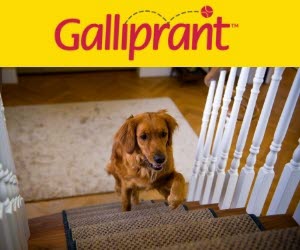Early detection of osteoarthritis in dogs: why it matters*
19 Dec 2023By Hanie Elfenbein, DVM
*Advertorial - Elanco Galliprant
Osteoarthritis (OA) affects an estimated 20 per cent of dogs1, and while figures differ depending on population studies, some reports suggest this number could be even higher2, 3. This figure is staggering, especially in light of knowledge that osteoarthritis is a common consideration in quality-of-life decisions. Early identification of dogs with OA allows this chronic & progressive condition to be effectively controlled using a variety of therapies, including NSAIDs such as Galliprant™.
The vital role of pet owners in early detection
With proper education, pet owners can play an integral role in the identification process. Early detection of OA enables timely initiation of a management plan aimed at controlling pain and inflammation, building muscle strength, and maximising range of motion and mobility. Of course, it can be difficult for pet owners to recognise the early signs of OA – meaning joint degeneration can continue unnoticed. Such delays in the reporting of symptoms can make it more challenging to control pain and adequately restore function. Once dogs present in the moderate to severe stages of arthritis, their degree of discomfort can range from moderate to unbearable.
A vicious cycle of deterioration
The initiation of OA sets in motion a vicious cycle of deterioration. Joint degeneration leads to joint pain, decreased use of the limb, weakening of periarticular structures and disuse muscle atrophy, further joint misalignment, compensatory gait changes and pain in other regions, a further reduction in mobility and exercise ability, and so on. Weight control becomes more challenging, placing extra stresses on the joints and a reduction in mobility/range of motion is detrimental to joint health. If pain is left uncontrolled, it can lead to pain sensitisation and maladaptive pain, which is more difficult to manage. It is also more challenging to rebuild periarticular strength and support when pain and structural changes are more advanced.
When OA and OA risk factors are picked up early, it is possible to intervene sooner with an OA management plan that can manage the severity of the disease. Starting from a less advanced point means the care plan is built on a stronger foundation because not as much deterioration in the joint, periarticular and muscular structures has taken place.
Cornerstone canine OA treatments
Once clinical OA is confirmed, drug and non-drug therapies are part of a balanced multimodal approach. NSAIDs such as Galliprant™ are often considered to be a cornerstone of canine OA treatment because pain control is not only important for the welfare and comfort of the animal, but also facilitates other elements of their OA management plan. For example, pain relief can help dogs get the maximum benefit from their exercise program. Important non-pharmacological modalities include weight control, exercise and physical rehabilitation programs, therapeutic joint support diets and empirically evaluated joint supplements.
Read Galliprant product leaflet for full instructions.
References:
1. Innes J.F. et al. Veterinary Record 2010; 166: 266-230. 2. Lascelles D. IASP. 2016; No 9. 3. Mele E. Veterinary Focus. 2007; 17(3):4-10.
©2021 Elanco or its affiliates. Galliprant™ is a trademark of Elanco or its affiliates. PM-AU-21-0532

